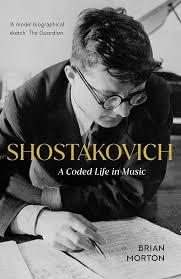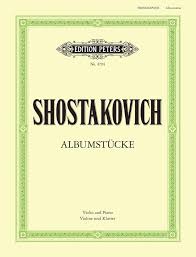Come join us now, and enjoy playing your beloved music and browse through great scores of every level and styles!
Can’t find the songbook you’re looking for? Please, email us at: sheetmusiclibrarypdf@gmail.com We’d like to help you!
Table of Contents
Shostakovich Piano Concerto No. 2 arr. for solo piano sheet music, Noten, partitura, spartiti, 楽譜

Best Sheet Music download from our Library.

Please, subscribe to our Library.
If you are already a subscriber, please, check our NEW SCORES’ page every month for new sheet music. THANK YOU!
Browse in the Library:
Or browse in the categories menus & download the Library Catalog PDF:
The Life of Dmitri Shostakovich (1906-1975)
Dmitri Shostakovich was one of the most significant and complex composers of the 20th century. His life and career were inextricably shaped by the political turmoil of the Soviet Union under Joseph Stalin, creating a lifelong tension between his artistic voice and the demands of the state.
Early Life and Success (1906-1936)
- Prodigy: Born in St. Petersburg, Shostakovich displayed immense musical talent from a young age. He entered the Petrograd Conservatory at 13 and gained international fame at 19 with his Symphony No. 1, a brilliant and mature work.
- The Soviet Artist: Initially, he embraced the ideals of the Russian Revolution and was seen as a wunderkind of the new Soviet state. His early works, like the opera The Nose, were avant-garde and satirical, full of modernist experimentation.
The Zhdanovshchina and “Lady Macbeth of Mtsensk” (1936)
This was the defining crisis of his life. In 1936, Stalin attended a performance of Shostakovich’s opera Lady Macbeth of the Mtsensk District. A few days later, an anonymous editorial (believed to be dictated by Stalin) titled “Muddle Instead of Music” appeared in Pravda, the official newspaper of the Communist Party. It condemned the opera as “chaos instead of music,” “formalist,” and “bourgeois.” This was not merely a bad review; it was a death threat. In the context of the Great Purge, such criticism could lead to arrest, exile, or execution.
- Consequences: Shostakovich became an “enemy of the people.” His income and performances vanished overnight. He was forced to withdraw his daring Symphony No. 4 from rehearsal to avoid further persecution.
The Public and Private Shostakovich (1937-Onward)
This experience forged his unique, dualistic style for survival:
- The Public Face: He learned to write “official” music that would satisfy the state’s demand for “Socialist Realism”—heroic, accessible, and optimistic. His Symphony No. 5 was subtitled (not by him) “A Soviet Artist’s Practical Creative Reply to Just Criticism.” It was a massive success and rehabilitated him publicly.
- The Private Face: Simultaneously, he composed deeply personal, dark, and complex works, often “encoding” subversive messages and despair. This is most evident in his chamber music—his string quartets are a secret diary of anguish—and in later symphonies like the Symphony No. 10.
Later Life and Legacy
- World War II: His Symphony No. 7 “Leningrad”, composed during the brutal siege of Leningrad, became a global symbol of resistance to fascism.
- Further Condemnation: In 1948, he was again denounced for “formalism,” along with other leading Soviet composers. He was forced to make public apologies while his most innovative works were banned.
- Thaw and Late Works: After Stalin’s death in 1953, the cultural “Thaw” allowed him more freedom. His late works are often meditations on mortality, war, and suffering, filled with musical cryptograms like his personal motto “DSCH” (D, E-flat, C, B in German musical notation).
Shostakovich died a celebrated but deeply conflicted figure. The debate continues as to whether he was a secret dissident or a compromised servant of the state; the truth is he was a survivor, and his music is the profound, tortured document of that survival.
Musical and Contemporary Analysis of Piano Concerto No. 2 in F Major, Op. 102 (1957)
The Piano Concerto No. 2 stands in stark contrast to the heavy, dramatic world of his symphonies. Composed as a 19th birthday gift for his son, Maxim, it is one of his most accessible and joyful works. However, a closer look reveals Shostakovich’s signature wit, complexity, and emotional depth.
Musical Analysis
1. First Movement: Allegro
- Form: A bright, neoclassical sonata-allegro form that recalls the clarity of Haydn or Mozart, but with a 20th-century harmonic twist.
- Character: The movement opens with a sprightly, playful theme introduced by the piano alone. It is energetic and technically demanding, designed to showcase a young pianist’s virtuosity.
- Orchestration: The orchestra often acts as a playful partner rather than a dramatic force. The texture is light and transparent, with witty interjections from the winds and strings.
2. Second Movement: Andante
- The Heart of the Work: This is one of Shostakovich’s most beautiful and hauntingly lyrical creations. It moves from the external joy of the first movement to a world of profound inwardness and romance.
- Structure: A simple, ternary (ABA) form.
- Section A: The strings introduce a tender, expansive melody of Rachmaninoff-like romance. When the piano enters, it plays a delicate, chorale-like accompaniment, creating a dreamy, nostalgic atmosphere.
- Section B: The mood shifts slightly, becoming more troubled and chromatic, hinting at the shadows that permeate so much of Shostakovich’s music, before returning to the serene beauty of the opening theme.
3. Third Movement: Allegro
- A Galop to the Finish: This movement is pure, unadulterated fun—a riotous galop (a lively 19th-century dance) that recalls the circus and music hall influences Shostakovich loved.
- Rhythm and Energy: It is driven by relentless, percussive rhythms from the piano and orchestra. The main theme is catchy and almost cartoonish in its exuberance.
- Virtuosity: It demands incredible speed, precision, and stamina from the soloist, providing a brilliant and crowd-pleasing finale.
Contemporary Analysis & Context (1957)
To understand this concerto, it’s crucial to place it in its historical moment:
- A Gift of Freedom (The Post-Stalin “Thaw”): Composed in 1957, four years after Stalin’s death, this piece reflects the slight cultural liberalization under Khrushchev. While Shostakovich was still composing his dark, introspective Symphony No. 11 (also 1957) about the 1905 Revolution, the Piano Concerto No. 2 represents a moment of personal and artistic respite. It was a private gift, not a public statement for the state, allowing him to write without political pressure.
- The “Public” Shostakovich at Home: This concerto is the sound of Shostakovich the father, not Shostakovich the public figure. Its warmth, simplicity, and lack of irony are a genuine expression of love for his son. It shows a side of the composer that was often hidden: playful, affectionate, and hopeful for the next generation.
- A Deliberate Simplicity: In an era where Western composers were exploring atonality and serialism, Shostakovich’s concerto is unapologetically tonal and melodic. This was not a retreat from modernism, but a conscious artistic choice for this specific work. It demonstrates his mastery of traditional forms and his ability to communicate directly with the listener, a skill honed by a lifetime of walking the line between accessibility and subversion.
The Piano Concerto No. 2 is often (and unfairly) dismissed as a “light” work. While it lacks the overt tragedy of his symphonies, its significance lies in its context. It is a snapshot of a rare, peaceful moment in a tormented life—a gift of pure music, free from political baggage, that showcases Shostakovich’s genius for melody, orchestration, and emotional communication in its most direct and heartfelt form.
